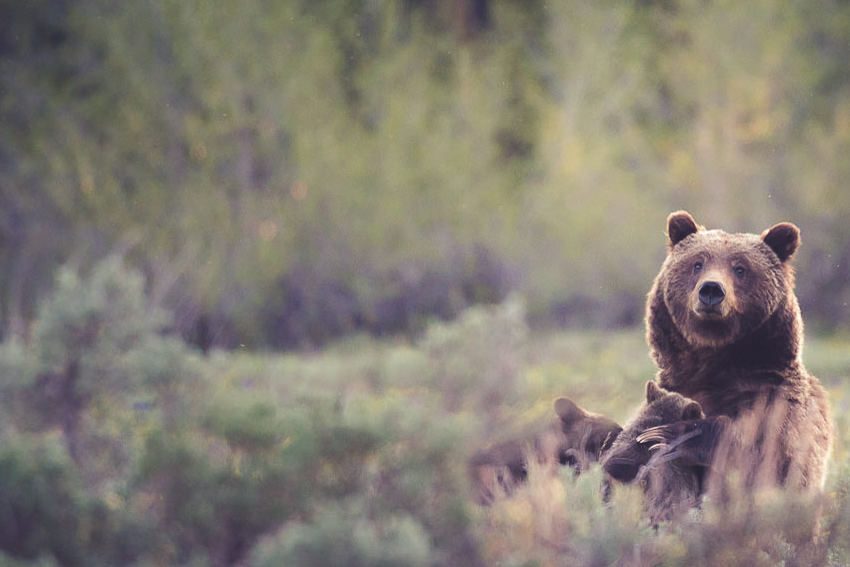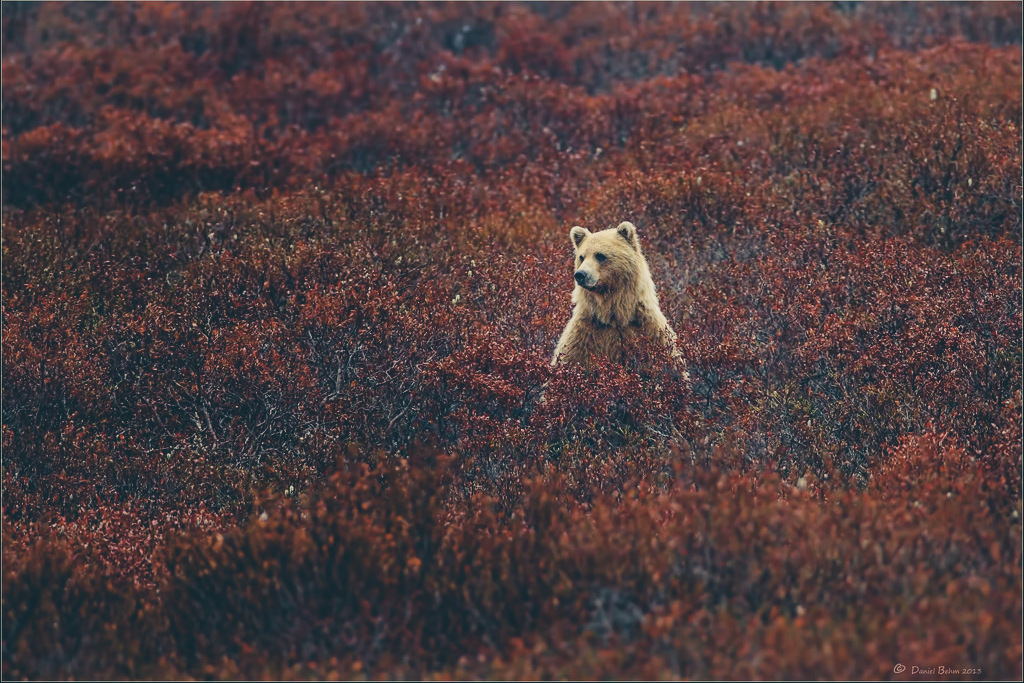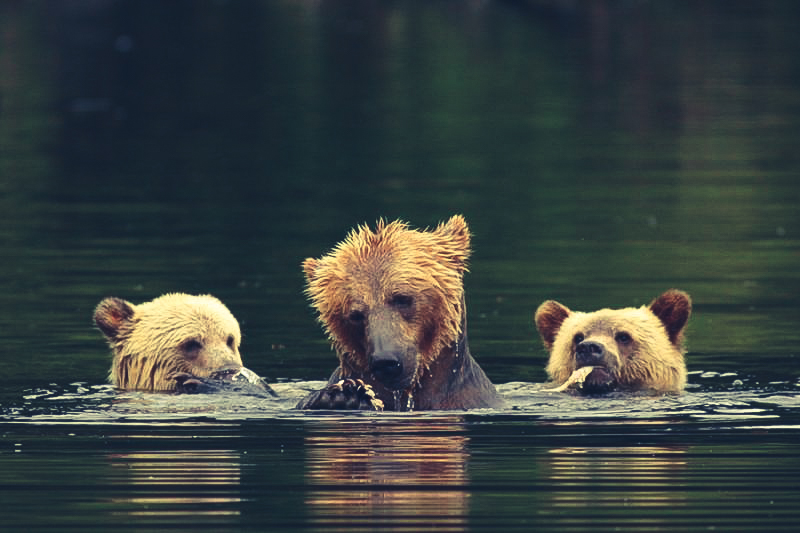Adradosa, C., Girard, I., and Gen, J. P. (2002, February). Global Positioning System (GPS) location accuracy improvement due to Selective Availability removal. Comptes Rendus Biologies, 325(2), 165-167.
Avgar, T., Mosser, A., Brown, G. and Fryxell, J. (2013). Environmental and individual drivers of animal movement patterns across a wide geographical gradient. Journal of American Ecology 82, 96-106
Bajaj, R., Ranaweera, S., & Agrawal, D. (2002). GPS: location-tracking technology. Computer, 35(4), 92-94. doi:10.1109/mc.2002.993780
Bojarska, K., and Selva, N. (2012). Spatial patterns in brown bear Ursus arctos diet : Mammal Review, 42(2), 120–143.
Drew, J.V. and Shanks, R.E. (1965) Landscape Relationships of Soils and Vegetation in the Forest-Tundra Ecotone, Upper Firth River Valley, Alaska- Canada. Ecol Monogr 35(3):285-306 Cristescu, B., Stenhouse, G. B., & Boyce, M. S. (2014). Predicting multiple behaviors from GPS radiocollar cluster data. Behavioral Ecology, 26(2), 452-464. doi:10.1093/beheco/aru214 Blanchard, B. M., and Knight, R. R. (1991) Movements of yellowstone grizzly bears. Biological Conservation 58(1), 41-67.
Edwards, M. A., and Derocher, A. E. (2015). Mating-related behaviour of grizzly bears in habiting marginal habitat at the periphery of their North American range. Behavioural Processes, 111, 75–83.
Edwards, M. A., Derocher, A. E., and Nagy, J. A. (2011). Fast carnivores and slow herbivores : differential foraging strategies among grizzly bears in the Canadian Arctic. Oecologia, 165, 877–889.
Edwards, M. A., Derocher, A. E., and Nagy, J. A. (2013). Home range size variation in female arctic grizzly bears relative to reproductive status and resource availability. PLoS ONE, 8(7), e68130.
Edwards, M. A., Derocher, A. E., Hobson, K. A., Branigan, M., and Nagy, J. A. (2010). Fast carnivores and slow herbivores: Differential foraging strategies among grizzly bears in the Canadian arctic. Oecologia, 165(4), 877–889.
Environment Yukon. (2013). Capturing and Handling Grizzly Bears. Retrieved February 7, 2017, from Yukon Southern Lakes Region Grizzly Bear Population Study: http://www.env.gov.yk.ca/animals- habitat/documents/Capturing_Handling_Grizzly_Bears.pdf
Environment Yukon. (2013). Collaring Grizzly Bears. Retrieved January 28, 2017, from Yukon Southern Lakes Region Grizzly Bear Population Study: http://www.env.gov.yk.ca/animals- habitat/documents/Collaring_Grizzly_Bears.pdf
Environment Yukon, Parks Canada, Western Arctic Field Unit. (2009). Aklavik Hunters and Trappers Committee, and Wildlife Management Advisory Council (North Slope). Retrieved January 18, 2017. http://www.wmacns.ca/pdfs/186_rpt_grizzly_midterm.pdf
Gardner, C. L., Pamperin, N. J. and Benson, J. F. (2014). Movement patterns and space use of maternal grizzly bears influence cub survival in Interior Alaska BioOne, 25(2), 121– 138. Gau, R. and Case, R. (1998) Grizzly Bear (Ursus Arctos) Studies in the Northwest Territories: Final Report to the West Kitikmeot/Slave Study Component No 1, Nutritional Ecology. West Kitikmeot/Slave Study Society. 1-66
Gau, R., Case, R., Penner. D. and McLoughlin, P. (2002). Feeding patterns of barren- ground grizzly bears in the Canadian central Arctic. Arctic Institute of North America 55(4), 339-344 Hawkings, J. (2001). General Land Cover/Habitat Classification for Yukon North Slope. Canadian Wildlife Service.
Humphries, M. M., Thomas, D. W., Kramer, D. L., Humphries, M. M., Thomas, D. W., and Kramer, D. L. (2017). Comparative Biology The Role of Energy Availability in Mammalian Hibernation : A Cost ‐ Benefit Approach The Role of Energy Availability in Mammalian Hibernation : A Cost-Benefit Approach. The University of Chicago Press Journals, 76(2), 165–179. Johnson, C., Parker, K., Heard, D. and Gillingham, M. (2002). Movement parameters of ungulates and scale-specific responses to the environment. Journal of Animal Ecology 71, 225-235 MacHutchon, A. G. (2001). Grizzly Bear Activity Budget and Pattern in the Firth River Valley, Yukon. Ursus, 12(2001), 189–198.
MacHutchon, A. G., Wellwood, D. W., MacHutchon, A. G., and Wellwood, D. W. (2017). Grizzly Bear Food Habits in the Northern Yukon , Canada Published by : International Association for Bear Research and Management Stable URL : http://www.jstor.org/stable/3873022 Grizzly bear food habits in the northern Yukon , Canada. International Association for Bear Research and Management, 14(2), 225–235.
Odum, E. P. and Kuenzler, E. J. (1955). Measurement of territory and home range size in birds. Auk, 72, 128-37.
Phillips, M. (1987). Behavior and habitat use of grizzly bears in northeastern Alaska. Int. Conf. Bear Res. and Manage. 7:159-167
Pianka, E. (1966). Latitudinal Gradients in Species Diversity : A Review of Concepts Author ( s ): Eric R . Pianka Source : The American Naturalist ,Vol . 100 , No . 910 ( Jan . - Feb ., 1966 ), pp . 33-46 Published by : The University of Chicago Press for The American Soc. The American Naturalist, 100(910), 33–46.
Pigeon, K. E., Stenhouse, G., and Côté, S. D. (2016). Drivers of hibernation : linking food and weather to denning behaviour of grizzly bears. Behavioral Ecology and Sociobiology, 70, 1745–1754.
Prima, M., Duchesne, T. and Fortin, D. (2017), Robust Inference from Conditional Logistic Regression Applied to Movement and Habitat Selection Analysis. PLOS One 12(1) Proctor, M. F., Paetkau, D., Mclellan, B. N., Stenhouse, G. B., Kendall, K. C., Mace, R. D., and Strobeck, C. (2011). Population fragmentation and inter-ecosystem movements of grizzly bears in western Canada and the northern United States. Wildlife Monographs, 180(1), 1–46. Shafer, A. B. A., Nielsen, S. E., Northrup, J. M., and Stenhouse, G. B. (2014). Linking genotype, ecotype, and phenotype in an intensively managed large carnivore. Evolutionary Applications, 7(2), 301–312.
Signer, J. and Ovaskainen, O. (2016). Detecting the influence of environmental covariates on animal movement: a semivariance approach. Methods in Ecology and Evolution 2041-2054 Smulders, M., Nelson, T. A., Jelinski, D. E., Nielsen, S. E., Stenhouse, G. B., and Laberee, K. (2012). Quantifying spatial–temporal patterns in wildlife ranges using STAMP: A grizzly bear example. Applied Geography, 35, 124–131.
Stewart, B. P., Nelson, T. A., Wulder, M. A., Nielsen, S. E., and Stenhouse, G. (2012). Impact of disturbance characteristics and age on grizzly bear habitat selection. Applied Geography, 34, 614–625.
Swanlund, D., Maraj, R., Schuurman, N., Hope, R., Donkers, K., Aquin, M., and Rickerby, G. (2016). GPS Performance in Yukon’s Arctic Coast. Swedish Society for Anthropology and Geography, 98(4), 361–368.
Telonics Inc. (2015, August 31). GPS GEN 3 TGW-3580. Retrieved February 2, 2017, from Telonics Quality Electronics for Wildlife, Environmental Research, and Special Applications: http://www.telonics.com/products/gps3/TGW-3580.php
Tracey, J.A., Zhu, J. and Crooks, K.R. (2011) Modeling and inference of animal movement using artificial neural networks. Environ Ecol Stat. 18(3) 393 Tracey, J.A., Zhu, J. and Crooks, K.R (2005). A set of nonlinear regression models for animal movement in response to a single landscape feature. JABES 10(1) 1-18
Tomkiewicz, S. M., Fuller, M. R., Kie, J. G., & Bates, K. K. (2010). Global positioning system and associated technologies in animal behaviour and ecological research. Philosophical Transactions of the Royal Society B: Biological Sciences, 365(1550), 2163-2176. doi:10.1098/rstb.2010.0090
Vuarin, P., Dammhahn, M., and Henry, P. (2013). Individual fl exibility in energy saving : body size and condition constrain torpor use. Functional Ecology, 27, 793–799. Wildlife Management Advisory Council, North Slope. (1996). Yukon North Slope Wildlife Conservation and Management Plan Volume 1: Environmental Overview. Retrieved February 26, 2017. http://www.wmacns.ca/conservation/wcmp/
Wildlife Management Advisory Council, North Slope. (2008) Aklavik Local and Traditional Knowledge about Grizzly Bears of the Yukon North Slope. Retrieved February 26, 2017. http://www.wmacns.ca/pdfs/272_WMAC09136=rpt_griz_knwldg_web3.pdf
Worton, B. J. (1987) A review of models of home range for animal movement. Ecological Modelling 38(3), 277-298.



